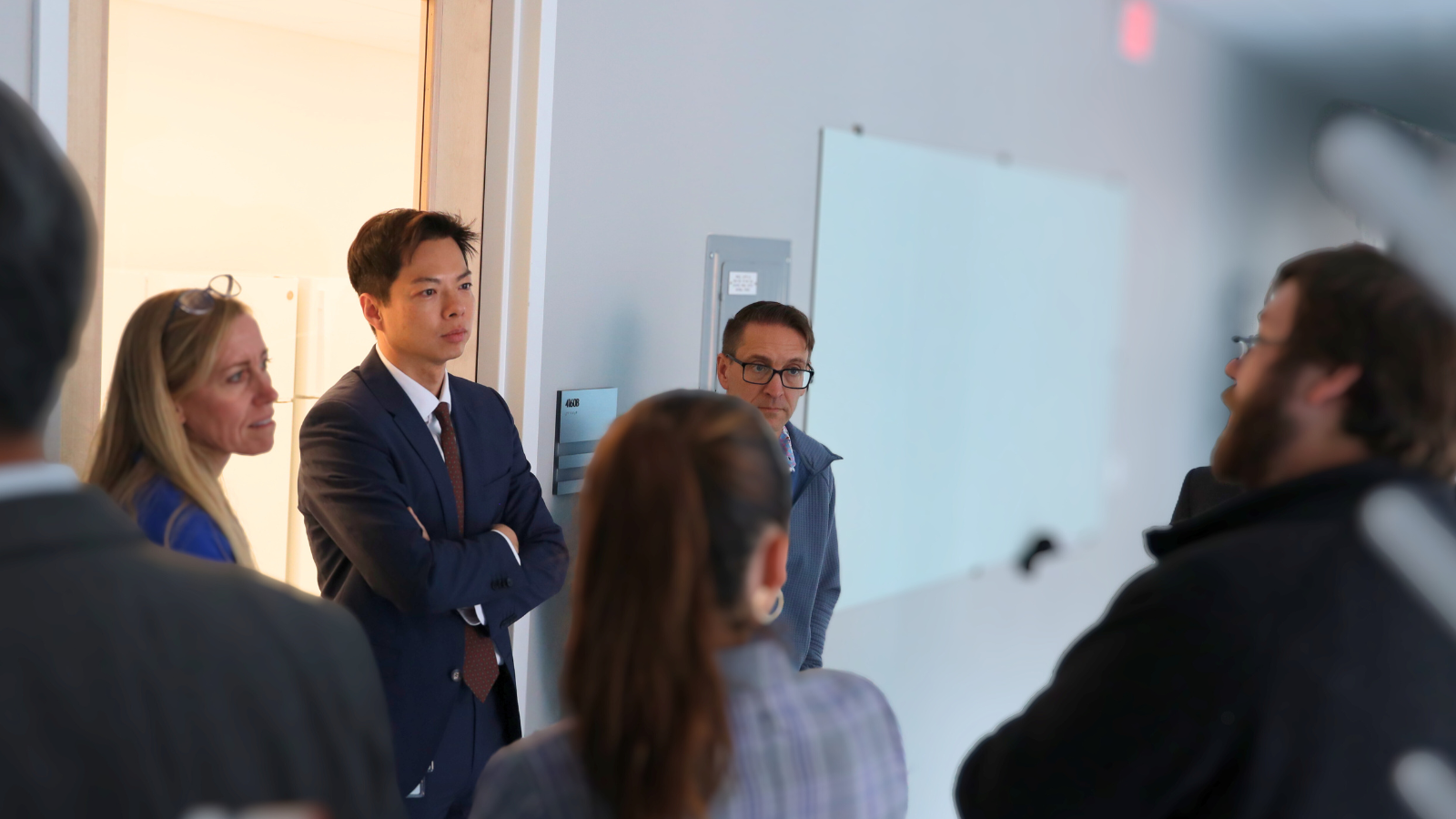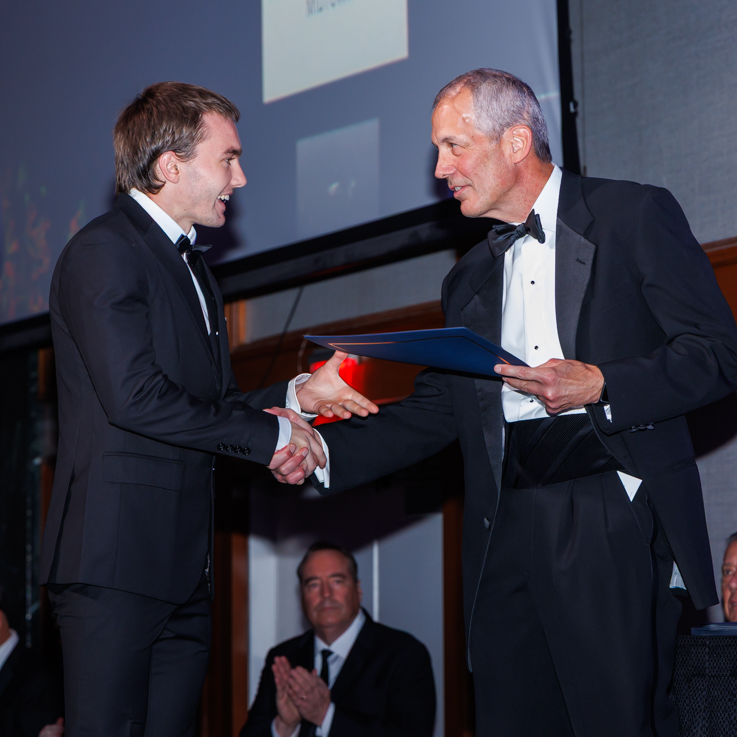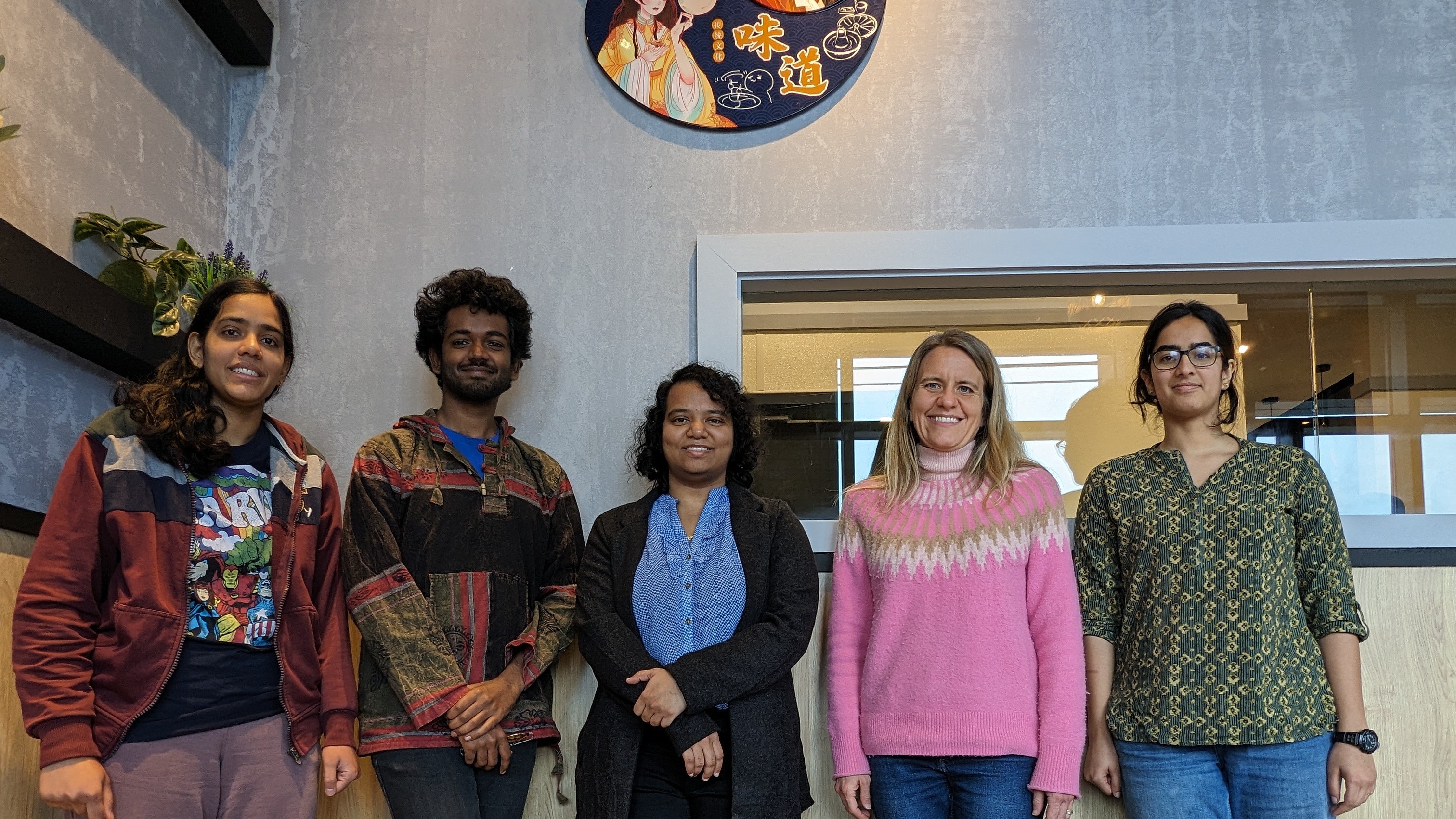News Story
UMD Invention of the Year Nominees Push Boundaries in Health, Energy, and Security
The year 2015 has come and gone, and despite "Back to the Future’s" predictions, there are still no flying cars. However, University of Maryland (UMD) researchers have been working to make the world a better place through new innovations focused on health, security, energy efficiency, and other areas that address global challenges.
These new inventions will be honored at a special Celebration of Innovation and Partnerships event on May 9 as part of the University of Maryland’s “30 Days of EnTERPreneurship.” Each year, UMD honors exceptional inventions that have the potential to make an important impact on science, society, and the free market. The Invention of the Year award nominees come from three categories: Physical Sciences, Life Sciences, and Information Sciences. One invention from each category is selected to win the Invention of the Year Award.
"We are proud to honor our campus researchers who continue to make our university a powerful engine for innovation and entrepreneurship," said Vice President and Chief Research Officer Patrick O'Shea. "These inventions and partnerships show how we can expand upon foundational research and scholarship to transform our understanding of new knowledge into products and services that advance society, and demonstrate why the University of Maryland continues to lead the way in establishing the ideal model for the 21st century university."
The nominees are selected from a vast number of innovations produced by UMD’s faculty and students. In 2015, researchers disclosed 167 inventions to the Office of Technology Commercialization within the Division of Research. A total of 23 technologies were licensed, and the U.S. Patent and Trademark Office issued 44 patents to UMD inventions.
This year’s nominees in the Physical Sciences category are:
Video Camera of the Future
"A True High-Dynamic Range Video Camera with Optimized Splitting Ratios and Synchronized Pixel Clocks"
Minta Martin Professor of Engineering Dr. Christopher Davis, Clark School of Engineering, Researcher Dr. John Robertson Rzasa, and Mr. J. Keith McElveen of Wave Sciences Corporation in Charleston, South Carolina have developed a high-dynamic range video camera that captures multiple successively attenuated image streams from a single lens and mixes these images in real time. This method creates a video stream that shows both very dim and very bright areas without saturating the image or causing excessive noise in the image.
Optoelectronic Devices Breakthrough
"Hybrid Metal-Graphene Plasmons for Tunable Terahertz Optoelectronics"
Mr. Mohammad M. Jadidi, Ph.D. student in the Department of Electrical and Computer Engineering in the Clark School of Engineering, along with Dr. Andrei B. Sushkov, Dr. David Kurt Gaskill, Dr. Michael Fuhrer, Dr. Howard Dennis Drew, and Professor and Director of the Institute for Research in Electronics and Applied Physics (IREAP) Dr. Thomas E. Murphy have invented a new method of designing tunable terahertz range optoelectronic devices, such as detectors, emitters, and filters. The inventors demonstrated that THz plasmonic resonance can be supported in graphene in contact with metal which is critical for the design of graphene based THz devices.
Safer and More Affordable Energy Storage
"Multiple-Electron Aqueous Battery"
UMD is a leader in environmental and energy storage research, and UMD Department of Chemical and Biomolecular Engineering researchers Dr. Liumin Suo and Dr. Chunsheng Wang along with researchers from the U.S. Army Research Laboratory Oleg Borodin, Arthur V Cresce, and Kang Xu, have invented multiple-electron aqueous battery. The battery uses a highly-concentrated water-based electrolyte that has improved stability to produce voltage and energy output comparable to existing lithium-ion batteries. The safer and cheaper battery will be usable in electric vehicles and grid-storage.
The nominees in the Life Sciences category are:
A New Vaccine for Leukemia
"Vaccine Compositions for Treating Acute Lymphoblastic Leukemia"
Acute Lymphoblastic Leukemia (ALL) is the most common cancer in children and is the leading cause of death of children in the United States. Dr. Scott Walsh, Assistant Professor in the Department of Cell Biology and Molecular Genetics in the College of Computer, Mathematical, and Natural Sciences and the Institute for Bioscience and Biotechnology Research, along with Mrs. Lila Kashi, Dr. Scott K. Durum of the Center for Cancer Research at the National Cancer Institute, Mrs. Julie Hixon, and Dr. Wen Qing Li, have developed a vaccine that can prevent and treat ALL in high risk patients. The vaccine is made of antigens created from cancer mutations and is less toxic and less likely to cause cognitive impairment in patients than current chemotherapy treatments.
An Ideal Variety of Wheat
"Commercially Useful Soft Red Winter Wheat Variety"
Wheat is the most exported product in the world and the second most exported product in the United States. Dr. Jose Costa, Professor Emeritus in the Department of Plant Sciences and Landscape Architecture in the College of Agriculture and Natural Resources, Mr. Aaron R. Cooper, and Mr. Benjamin Conway have used crossing and selection to invent a new variety of wheat that is commercially useful. Their Soft Winter Wheat variety yields high amounts of grain, is resistant to mildew and other diseases, and is ideal for use in baked goods.
A New Vaccine for Gonorrhea
"Gonorrhea Vaccine"
Gonorrhea can affect both men and women, but this invention is especially important to women’s health because gonorrhea can lead to pelvic inflammatory disease, an increased risk of ectopic pregnancy, and infertility in women when left untreated. In recent years, drug-resistant gonorrhea has emerged limiting available treatments for gonorrhea infections. Dr. Daniel Stein in the Department of Cell Biology and Molecular Genetics in the College of Computer, Mathematical, and Natural Sciences and Dr. Andrzej S. Piekarowicz, a professor at the University of Warsaw in Poland, have developed a vaccine that can prevent gonorrhea infections, even from gonorrhea that is drug-resistant.
The nominees in the Information Sciences category are:
New Advancements in Face Detection Technology
"Hyperface: A Deep Multi-Task Learning Framework for Face Detection, Landmark Localization, Pose Estimation, and Gender Recognition"
Dr. Rama Chellappa, Minta Martin Professor of Engineering and Chair of the Department of Electrical and Computer Engineering in the Clark School of Engineering, Mr. Rajeev Ranjan, and Dr. Vishal Patel, Assistant Research Scientist in the Department of Electrical and Computer Engineering, have created an algorithm for facial recognition software that simultaneously identifies gender, facial poses, and facial landmarks, and recognizes faces in images. Identifying all of these characteristics in photos using current algorithms is often difficult, and the researchers anticipate that the algorithm can be used in digital cameras, mobile device security, social networks, security cameras, and forensic analysis.
A New Portal for Cyber Supply Chain Risk Management
"The Cyber Supply Chain Risk Management Portal"
Cybersecurity is extremely important to businesses and the safety and privacy of customers. A group of researchers comprised of Dr. Sandor Boyson, Research Professor in the Smith School of Business and Co-Director of the Supply Chain Management Center, Dr. Thomas Corsi, Michelle E. Smith Professor of Logistics in the Smith School of Business and Co-Director of the Supply Chain Management Center, Ms. Holly Mann, Mr. Hart Rossman, Fellow, Supply Chain Management Center, Ph.D. candidate John Paraskevas, and Mr. Chris Keegan, has collaborated to create the Cyber Supply Chain Risk Management Portal. The portal allows businesses to anonymously upload data to compare their cybersecurity capabilities to existing standards as well as to their peers and competitors. It can be used to assess cybersecurity risks by cybersecurity insurance and compliance companies.
Predicting Successful Cancer Treatment Methods for Individual Patients
"Harnessing Synthetic Rescues to Assess and Counteract Resistance to Treatment in Cancer"
Dr. Eytan Ruppin, Professor of Computer Science in the College of Computer, Mathematical, and Natural Sciences, Dr. Joo Sang Lee, and Dr. Avinash Das Sahu have invented a framework that tracks resistance to cancer treatments to predict the likelihood of success in the treatment of cancer in individual patients. The framework can be used to decide the best method of treatment for patients and can also be applied to developing new forms of cancer treatment and refining the design of already existing treatments that target cancer genes.
To learn more about the University of Maryland’s “30 Days of EnTERPreneurship,” visit: http://www.umd.edu/30Days/.
Published April 7, 2016









